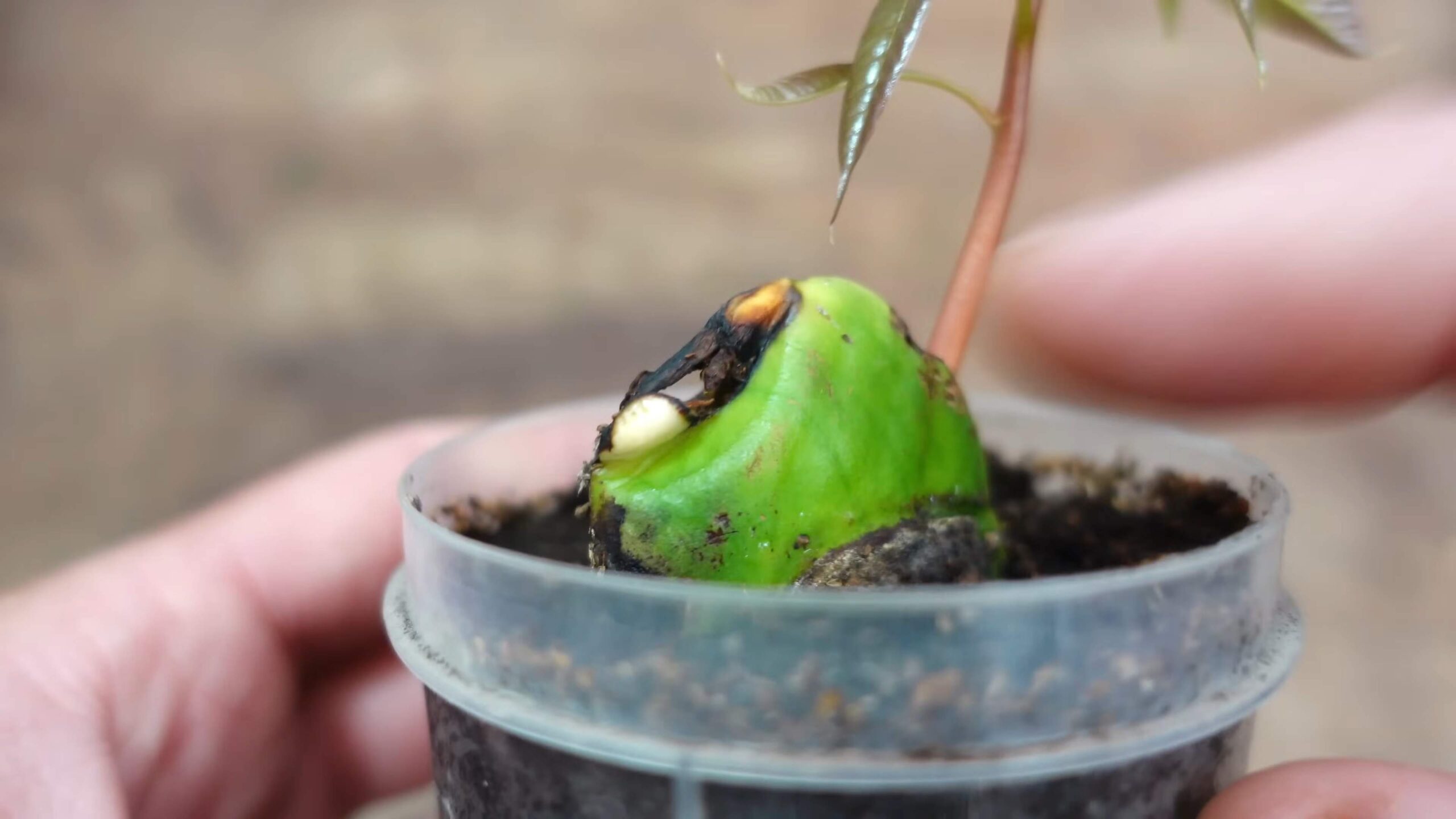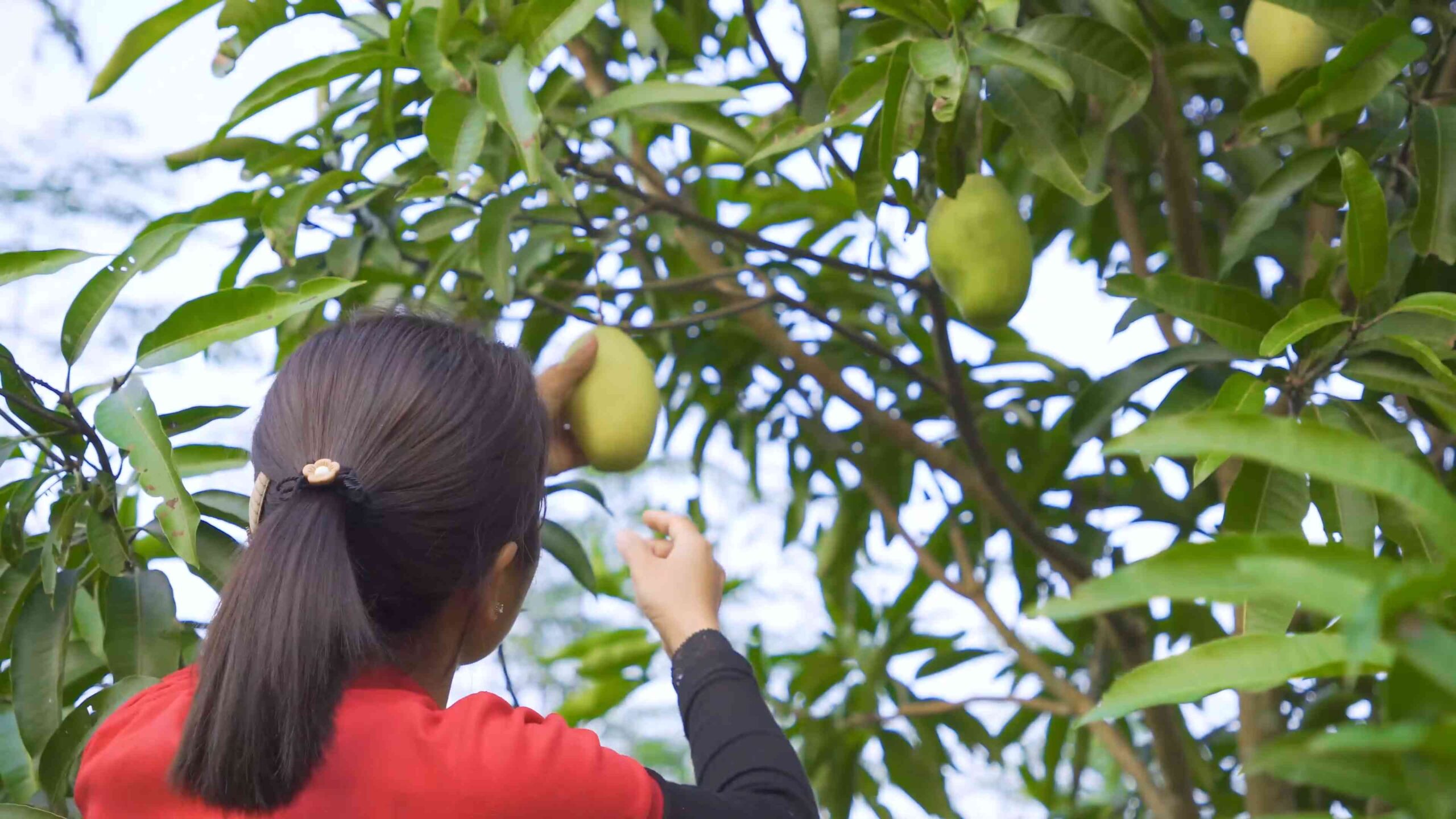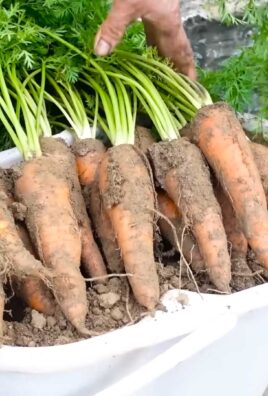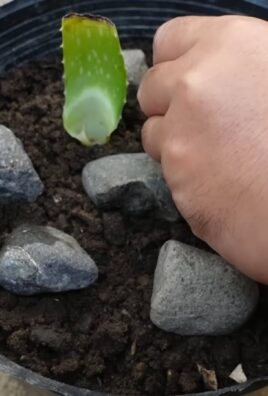Grow Mango Tree from Seed: Imagine biting into a juicy, sun-ripened mango, bursting with tropical flavor, and knowing you grew it yourself! Sounds like a dream, right? Well, it doesn’t have to be! This DIY guide will walk you through the surprisingly simple process of cultivating your very own mango tree from a single seed.
For centuries, mangoes have been revered across cultures, particularly in South Asia, where they originated. They’re not just delicious; they’re symbols of prosperity, love, and even immortality in some traditions. Bringing that history and symbolism into your own backyard is easier than you think!
Why should you learn this DIY trick? Because store-bought mangoes, while tasty, often lack the intense flavor and freshness of homegrown fruit. Plus, growing your own mango tree is incredibly rewarding. It’s a fantastic way to connect with nature, learn about plant life cycles, and impress your friends and family with your green thumb. Many people are intimidated by the idea of growing tropical fruit, but I’m here to tell you that with a little patience and this easy-to-follow guide, you can successfully grow mango tree from seed and enjoy the fruits (literally!) of your labor for years to come. Let’s get started!

Growing a Mango Tree from Seed: A Comprehensive DIY Guide
Hey there, fellow plant enthusiasts! Ever dreamt of having your own mango tree, laden with juicy, tropical goodness? Well, you can make that dream a reality, and it’s surprisingly easier than you might think! I’m going to walk you through the entire process of growing a mango tree from seed, from selecting the right mango to nurturing your little seedling into a thriving tree. Let’s get started!
Choosing the Right Mango and Extracting the Seed
First things first, you need a mango! But not just any mango will do. Here’s what to look for:
* Variety Matters: Some mango varieties are polyembryonic, meaning they produce multiple seedlings from a single seed. These are generally easier to germinate and more likely to produce a tree true to the parent variety. Examples include Tommy Atkins, Haden, and Kent, which are commonly found in grocery stores. However, keep in mind that even with polyembryonic varieties, there’s still a chance of variation.
* Ripeness is Key: Choose a mango that’s fully ripe. It should be fragrant, slightly soft to the touch, and have vibrant color. Overripe is okay, but avoid mangoes that are bruised or damaged.
* Freshness is Paramount: The fresher the mango, the better the chances of successful germination. Don’t let it sit around for too long after you buy it.
Now, let’s get that seed out!
1. Enjoy the Fruit! First, savor the delicious mango flesh. This is the best part of the process, right?
2. Clean the Seed: Once you’ve enjoyed the mango, you’ll be left with a large, fibrous husk. Use a knife to carefully remove any remaining flesh from the husk. Clean it thoroughly under running water. This is important to prevent mold growth.
3. Drying the Husk (Optional): Some people recommend drying the husk for a few days before opening it. This can help prevent it from rotting. I’ve had success both with and without drying, so it’s up to you. If you choose to dry it, place it in a well-ventilated area away from direct sunlight.
Opening the Mango Husk and Preparing the Seed
This is where things get a little tricky, but don’t worry, I’ll guide you through it.
* Safety First! Use a sharp knife and be extremely careful. It’s best to wear gloves to protect your hands.
* Locate the Seam: Look for a natural seam along the edge of the husk. This is where you’ll want to insert your knife.
* Carefully Pry it Open: Gently insert the tip of your knife into the seam and carefully pry the husk open. You might need to work your way around the husk, making small cuts until it splits open. Be patient and avoid forcing it, as you don’t want to damage the seed inside.
* Extract the Seed: Inside the husk, you’ll find one or more seeds. These seeds look like large lima beans. Carefully remove them from the husk.
* Inspect the Seed: Check the seed for any signs of damage or rot. Discard any seeds that look unhealthy.
Germinating the Mango Seed
There are a couple of methods you can use to germinate your mango seed. I’ll describe both, and you can choose the one that works best for you.
Method 1: The Paper Towel Method
This is a simple and effective method for germinating mango seeds.
1. Wrap in Damp Paper Towels: Moisten a few paper towels and gently squeeze out any excess water. Wrap the mango seed in the damp paper towels.
2. Place in a Plastic Bag: Put the wrapped seed in a resealable plastic bag. This will help retain moisture.
3. Warm Location: Place the bag in a warm location, such as on top of your refrigerator or near a sunny window (but not in direct sunlight). The ideal temperature is around 70-80°F (21-27°C).
4. Check Regularly: Check the seed every few days to make sure the paper towels are still moist. If they’re drying out, lightly mist them with water.
5. Wait for Germination: It can take anywhere from one to four weeks for the seed to germinate. You’ll know it’s working when you see a small root emerging from the seed.
Method 2: Direct Sowing in Soil
This method involves planting the seed directly into soil.
1. Prepare the Pot: Fill a pot with well-draining potting mix. A mixture of potting soil, perlite, and vermiculite works well.
2. Plant the Seed: Make a small hole in the center of the pot, about 1-2 inches deep. Place the mango seed in the hole with the curved side facing up. Cover the seed with soil and gently pat it down.
3. Water Thoroughly: Water the soil thoroughly until it’s evenly moist.
4. Warm Location: Place the pot in a warm, sunny location.
5. Keep the Soil Moist: Keep the soil consistently moist, but not waterlogged.
6. Wait for Germination: It can take several weeks for the seed to germinate. Be patient!
Planting the Seedling
Once your mango seed has germinated and has a good root system and a few leaves, it’s time to plant it in a larger pot.
1. Choose a Larger Pot: Select a pot that’s at least 6-8 inches in diameter. Make sure it has drainage holes.
2. Prepare the Potting Mix: Use a well-draining potting mix, similar to what you used for germination.
3. Carefully Remove the Seedling: Gently remove the seedling from the paper towels or the smaller pot, being careful not to damage the roots.
4. Plant the Seedling: Make a hole in the center of the larger pot and carefully place the seedling in the hole. Cover the roots with soil and gently pat it down.
5. Water Thoroughly: Water the soil thoroughly until it’s evenly moist.
6. Provide Sunlight: Place the pot in a sunny location where it will receive at least 6-8 hours of sunlight per day.
Caring for Your Mango Seedling
Now that your mango seedling is planted, it’s important to provide it with the proper care to help it thrive.
* Watering: Water your mango seedling regularly, keeping the soil consistently moist but not waterlogged. Allow the top inch of soil to dry out between waterings.
* Fertilizing: Fertilize your mango seedling every 2-3 months with a balanced fertilizer. Follow the instructions on the fertilizer package.
* Pruning: Prune your mango seedling as needed to encourage branching and a healthy shape. Remove any dead or damaged branches.
* Pest Control: Keep an eye out for pests, such as aphids, mealybugs, and spider mites. If you notice any pests, treat them with an appropriate insecticide or horticultural oil.
* Repotting: As your mango seedling grows, you’ll need to repot it into larger pots. Repot it when the roots start to circle the bottom of the pot.
* Protect from Frost: Mango trees are sensitive to frost. If you live in an area with cold winters, you’ll need to protect your mango seedling from frost. You can do this by bringing it indoors or covering it with a frost blanket.
Patience is Key!
Growing a mango tree from seed takes time and patience. It can take several years for your tree to start producing fruit. However, the reward of harvesting your own homegrown mangoes is well worth the wait!
Important Note: Mango trees grown from seed may not produce fruit that is identical to the parent tree. This is because mangoes are often hybrids. However, you’ll still get delicious mangoes, and you’ll have the satisfaction of knowing that you grew them yourself!
Final Thoughts: I hope this guide has been helpful. Growing a mango tree from seed is a rewarding experience, and I encourage you to give it a try. With a little patience and care, you can have your own tropical paradise in your backyard! Good luck, and happy growing!

Conclusion
So, there you have it! Growing your own mango tree from seed might seem like a tropical dream reserved for expert gardeners, but as you’ve seen, it’s a surprisingly accessible and rewarding project for anyone with a little patience and a love for fresh fruit. This DIY trick isn’t just about saving money; it’s about connecting with nature, understanding the life cycle of a plant, and ultimately, enjoying the unparalleled satisfaction of harvesting your own homegrown mangoes.
Why is this a must-try? Because beyond the potential for delicious fruit, it’s an educational experience for the whole family. It teaches responsibility, fosters an appreciation for the environment, and provides a tangible connection to the food we eat. Plus, imagine the bragging rights when you can offer friends and family a mango grown right in your own backyard!
But the journey doesn’t end with the basic method. Feel free to experiment! Try different varieties of mangoes to see which one thrives best in your climate. Consider grafting your seedling onto a more established rootstock for faster fruiting and improved disease resistance. You could even try growing your mango tree in a large container, allowing you to move it indoors during colder months if you live in a region with harsh winters.
Don’t be afraid to get creative with your setup. Use recycled materials for your pots, experiment with different soil mixes, and find the perfect sunny spot in your home or garden. The key is to observe your tree, learn from its needs, and adapt your approach accordingly.
We wholeheartedly encourage you to give this DIY trick a try. It’s a relatively low-cost, low-risk project with the potential for a high reward – both in terms of delicious fruit and personal satisfaction. And most importantly, we want to hear about your experience! Share your photos, tips, and challenges in the comments below. Let’s create a community of mango-growing enthusiasts and learn from each other’s successes and failures. Let us know what variety of mango you chose and how the germination process went. Did you encounter any unexpected hurdles? What did you do to overcome them? Your insights could be invaluable to other aspiring mango growers.
Remember, growing a mango tree from seed is a journey, not a race. It requires patience, dedication, and a willingness to learn. But the rewards – the lush green foliage, the fragrant blossoms, and the sweet, juicy fruit – are well worth the effort. So, grab a mango, enjoy its deliciousness, and then embark on this exciting adventure. You might just discover a hidden talent for gardening and a newfound appreciation for the magic of nature. Start your **grow mango tree from seed** project today!
Frequently Asked Questions (FAQ)
1. What type of mango seed is best for growing a tree?
The best type of mango seed to use is one that comes from a mature, ripe mango that you enjoyed eating! The fresher the seed, the higher the chance of successful germination. Polyembryonic mango varieties (those that produce multiple seedlings from a single seed) are often preferred because they are more likely to produce a tree that is true to the parent variety. Some popular polyembryonic varieties include Tommy Atkins, Haden, and Kent. However, even monoembryonic varieties (those that produce only one seedling) can be successfully grown, although the resulting fruit may not be exactly the same as the parent mango. The most important thing is to choose a mango that is well-suited to your local climate. Research which varieties thrive in your region and select a mango from a local source if possible.
2. How long does it take for a mango seed to germinate?
Germination time can vary depending on several factors, including the freshness of the seed, the temperature, and the moisture levels. Generally, you can expect to see signs of germination within 2-4 weeks. However, it can sometimes take longer, even up to 6-8 weeks. Patience is key! Ensure the seed remains consistently moist but not waterlogged. Maintaining a warm environment (around 70-80°F or 21-27°C) will also help speed up the germination process. If you haven’t seen any signs of growth after 8 weeks, it might be worth trying a different seed.
3. What kind of soil is best for growing a mango tree from seed?
Mango trees thrive in well-draining soil that is rich in organic matter. A good soil mix would be a combination of potting soil, compost, and perlite or vermiculite. The potting soil provides a base for nutrients, the compost adds essential organic matter and improves drainage, and the perlite or vermiculite helps to aerate the soil and prevent it from becoming compacted. Avoid using heavy clay soils, as they can retain too much water and lead to root rot. The ideal pH level for mango trees is slightly acidic, around 6.0 to 6.5. You can test the pH of your soil using a soil testing kit and amend it accordingly if necessary.
4. How much sunlight does a mango tree need?
Mango trees are sun-loving plants and require at least 6-8 hours of direct sunlight per day to thrive. Choose a location in your garden that receives plenty of sunlight throughout the day. If you are growing your mango tree in a container, make sure to place it in a sunny spot, such as a south-facing window. If you live in a region with intense summer heat, you may need to provide some afternoon shade to protect the leaves from scorching. Insufficient sunlight can lead to stunted growth, reduced fruit production, and increased susceptibility to diseases.
5. How often should I water my mango tree seedling?
Water your mango tree seedling regularly, especially during the first few months after germination. The soil should be kept consistently moist but not waterlogged. Water deeply whenever the top inch of soil feels dry to the touch. Avoid overwatering, as this can lead to root rot. During the dormant season (winter), you can reduce the frequency of watering. As the tree matures, it will become more drought-tolerant, but it’s still important to provide adequate water, especially during hot and dry periods.
6. When can I expect my mango tree to produce fruit?
Growing a mango tree from seed can be a long-term commitment. It typically takes 5-8 years for a seedling-grown mango tree to produce fruit. Grafted mango trees, on the other hand, can start producing fruit in as little as 3-5 years. The time it takes for a tree to fruit also depends on the variety of mango, the climate, and the overall health of the tree. To encourage fruiting, make sure your tree receives plenty of sunlight, water, and nutrients. You can also prune the tree to promote branching and increase the number of fruiting sites.
7. Can I grow a mango tree indoors?
Yes, you can grow a mango tree indoors, but it requires some extra care and attention. Choose a large container with good drainage and use a well-draining potting mix. Place the container in a sunny location, such as a south-facing window. You may need to supplement with artificial light, especially during the winter months. Keep the soil consistently moist but not waterlogged. Prune the tree regularly to control its size and shape. Indoor mango trees may not produce as much fruit as outdoor trees, but they can still be a beautiful and rewarding addition to your home.
8. What are some common problems that affect mango trees?
Mango trees can be susceptible to various pests and diseases, including aphids, scale insects, mango hoppers, anthracnose, and powdery mildew. Regularly inspect your tree for signs of infestation or disease. Treat any problems promptly with appropriate insecticides or fungicides. Good cultural practices, such as proper watering, fertilization, and pruning, can also help to prevent pests and diseases. Ensure good air circulation around the tree to reduce the risk of fungal infections.
9. How do I fertilize my mango tree seedling?
Fertilize your mango tree seedling regularly with a balanced fertilizer that is specifically formulated for fruit trees. Apply the fertilizer according to the manufacturer’s instructions. Avoid over-fertilizing, as this can damage the roots. You can also supplement with organic fertilizers, such as compost or manure. During the growing season (spring and summer), fertilize more frequently than during the dormant season (winter).
10. Is it possible to grow a mango tree in a cold climate?
Growing a mango tree in a cold climate can be challenging, but it is possible with some extra effort. Choose a dwarf variety that is well-suited to container growing. Grow the tree in a large container so that you can move it indoors during the winter months. Provide supplemental heat and light during the winter to keep the tree warm and healthy. You may also need to protect the tree from frost and freezing temperatures. While you may not get a large harvest of mangoes in a cold climate, you can still enjoy the beauty of the tree and the satisfaction of growing your own tropical fruit.





Leave a Comment